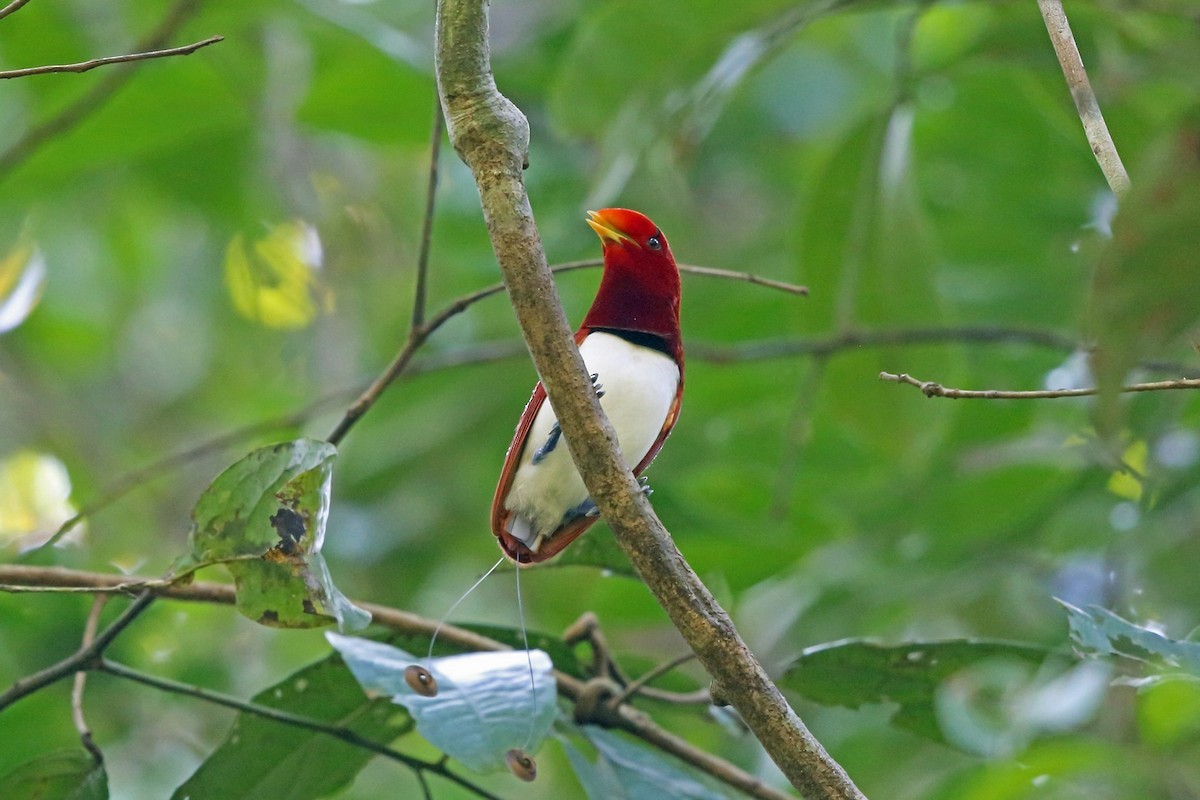King Bird-of-paradise
A species of Sickle-tails Scientific name : Cicinnurus regius Genus : Sickle-tails
King Bird-of-paradise, A species of Sickle-tails
Botanical name: Cicinnurus regius
Genus: Sickle-tails
Content
Description General Info
 Photo By Nigel Voaden
Photo By Nigel Voaden Description
This so-called "living gem" is the smallest and most vividly colored among birds-of-paradise. The king bird-of-paradise is small, measuring approximately 6.3–7.5 inches (16–19 cm) long, but 12.2 inches (31 cm) if central rectrices of adult males included. Females weight about 0.08–0.13 pounds (36–59 g), males 0.10–0.14 pounds (45–64 g). The adult male has a overall metallic crimson color, slightly orange under certain lights, and more particularly so in the crown. They have a narrow, dark green iridescent breast band with whitish lower breast, and green-tipped fan-like plumes on shoulder. The feathers of the undertail and mantle are olive-brown, with iridescent green tips, and violet legs. Bills are ivory-yellow. Females have dull olive head and upperparts with yellowish underparts and violet legs. 
Size
16 - 19 cm
Nest Placement
Ground
Feeding Habits
King Bird-of-paradise primarily feeds on fruits and arthropods, foraging across various forest strata. It often joins mixed-species groups to hunt for arthropods in lower vegetation, exhibiting unique social feeding behavior.
Habitat
The king Bird-of-paradise thrives in tropical environments, predominantly inhabiting lowland and monsoon rainforests. It is also found in gallery forests, forest edges, and can adapt to disturbed regions with tall secondary growth. Commonly, this species is seen in areas of dense canopy cover within broader equatorial regions.
Dite type
Frugivorous
General Info
Feeding Habits
Bird food type

Fruit
Behavior
There is little information available about this species’ behavior. They are inconspicuous and may be hard to locate, except for males at their display trees. 
Distribution Area
The King Bird-of-paradise is distributed throughout the majority of lowland New Guinea mainland, and on the surrounding islands, including Aru, Salawati, Missol, and Yapen, inhabiting mostly lowland rainforests, gallery forests, forest edges, and disturbed and tall secondary forests. Cicinnurus regius [regius, rex or gymnorhynchus]: S New Guinea, Aru and w Papuan islands Cicinnurus regius [coccineifrons, similis or cryptorhynchus]: N watershed of main body of New Guinea and Yapen I. 
Species Status
The species is tentatively assessed as being in decline due to habitat loss and unsustainable levels of hunting. However, despite the fact that the population trend appears to be decreasing, being a widespread and a abundant species throughout their large habitat range, the king bird-of-paradise is evaluated as Least Concern on the IUCN Red List of Threatened Species. It is listed on Appendix II of CITES. 

 Photo By Nigel Voaden
Photo By Nigel Voaden Scientific Classification
Phylum
Chordates Class
Birds Order
Perching birds Family
Birds-of-paradise Genus
Sickle-tails Species
King Bird-of-paradise